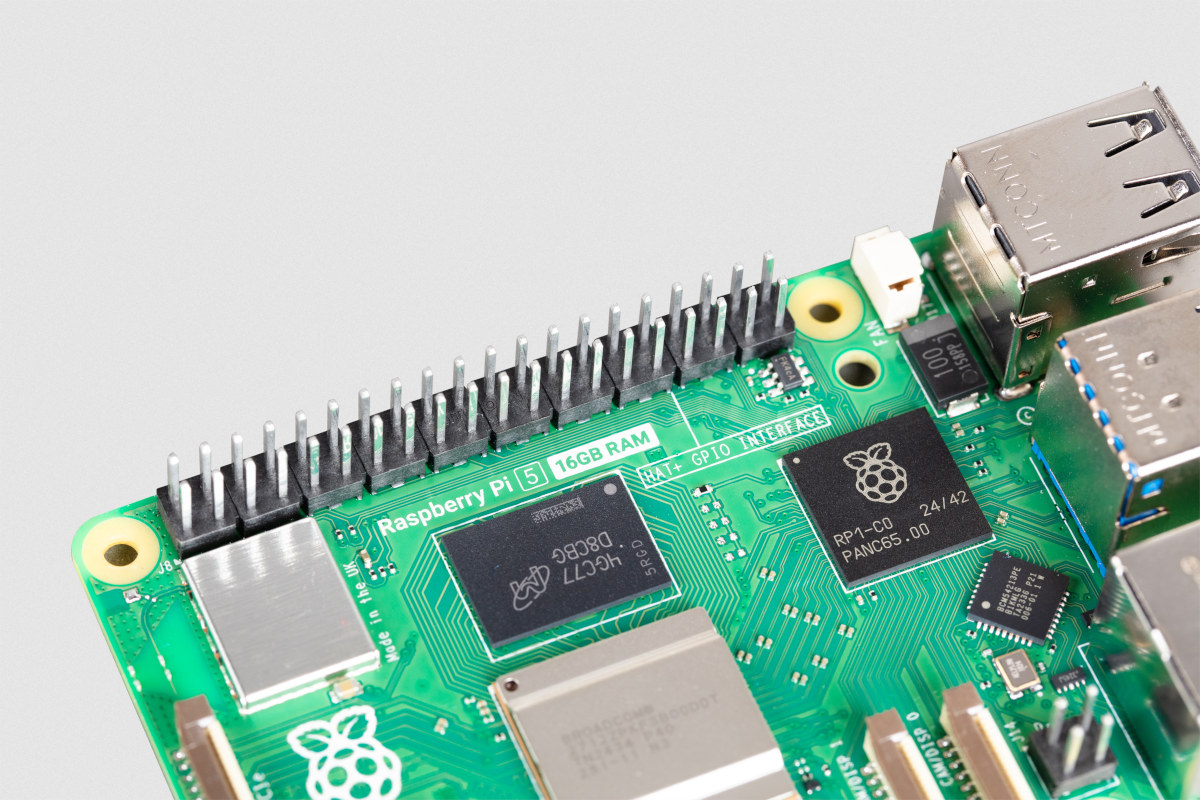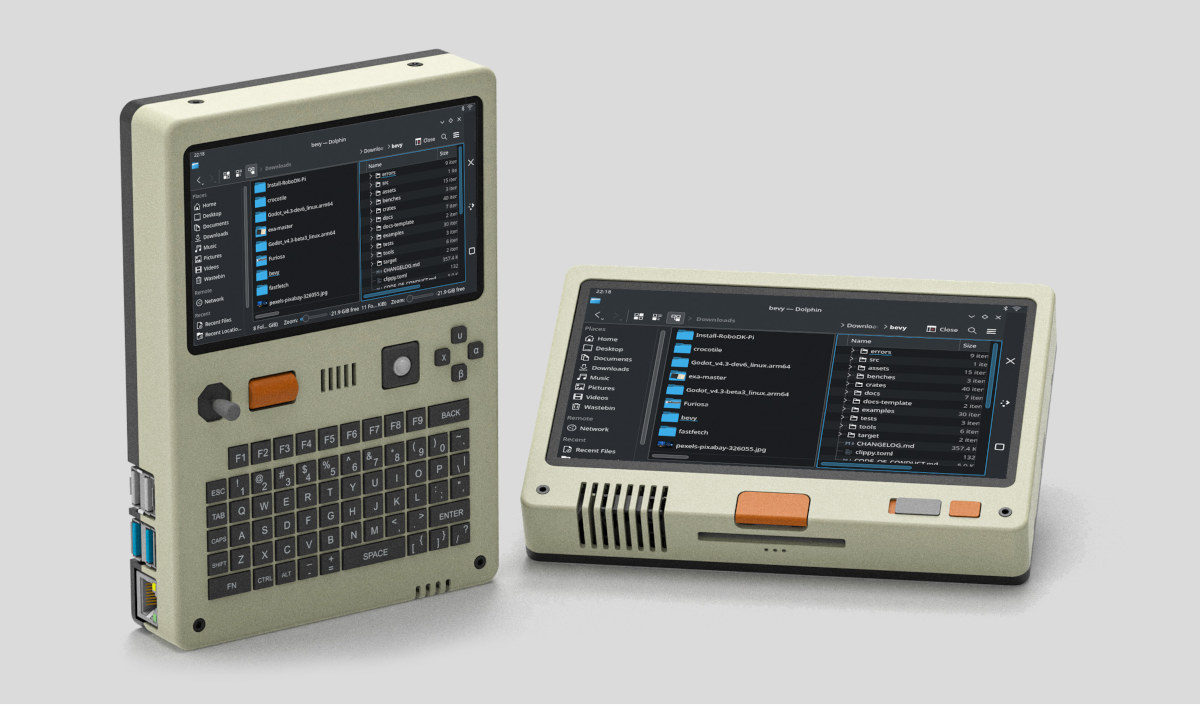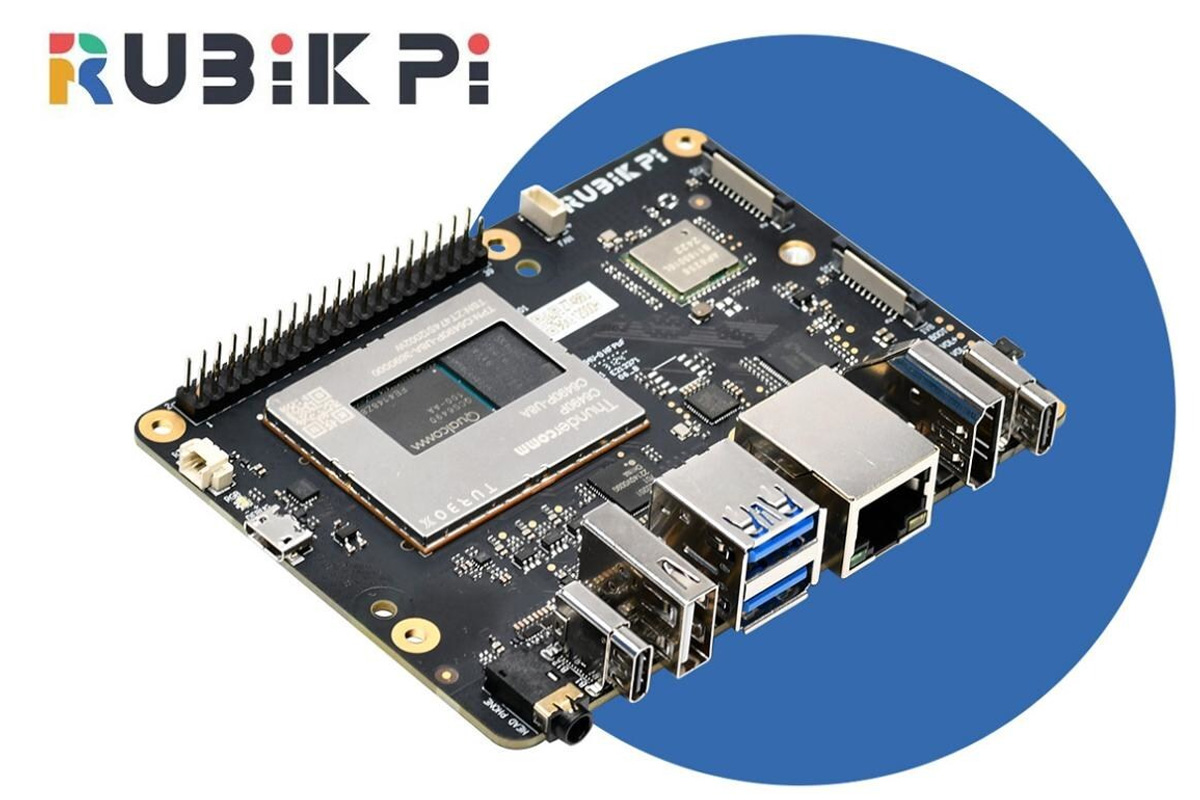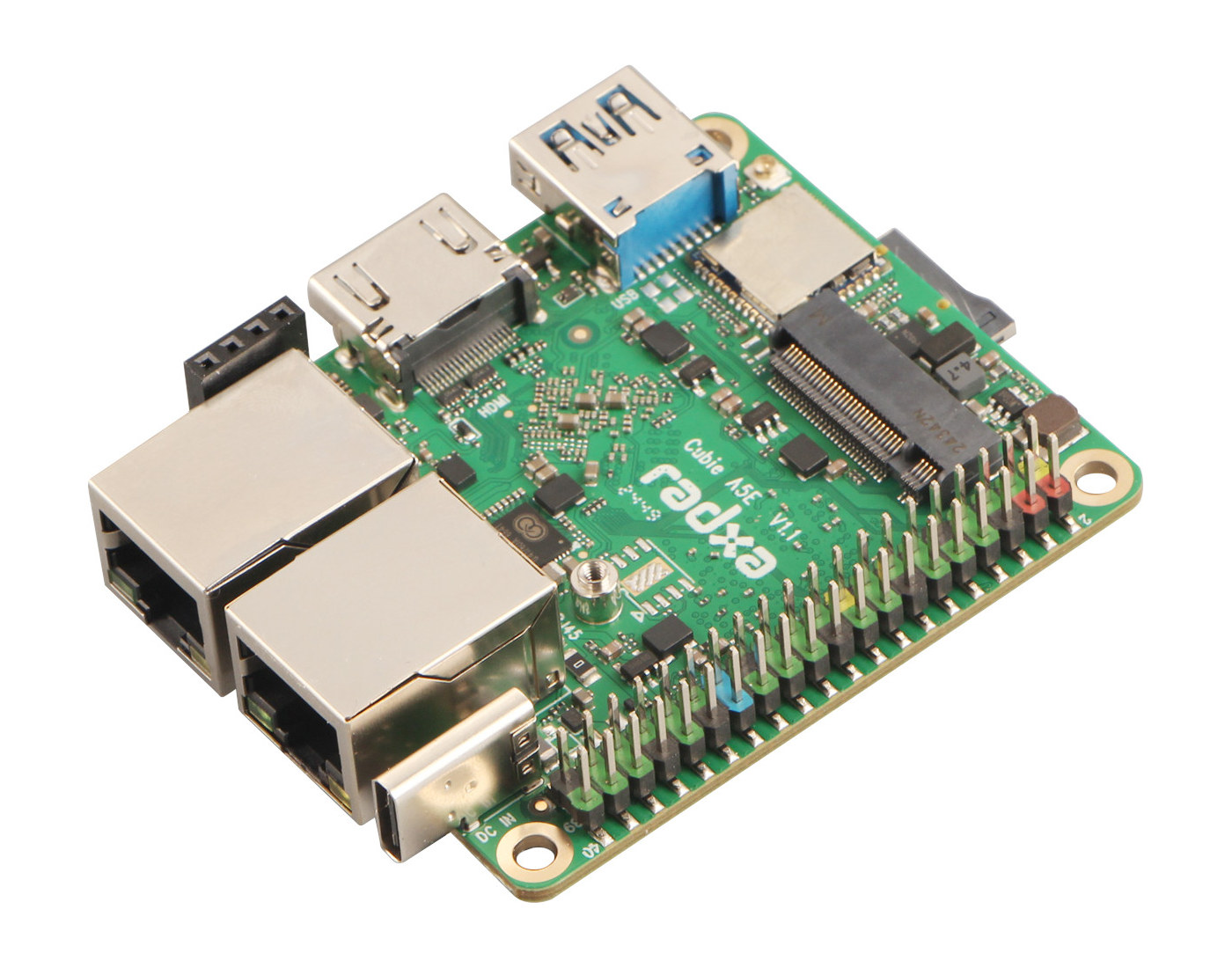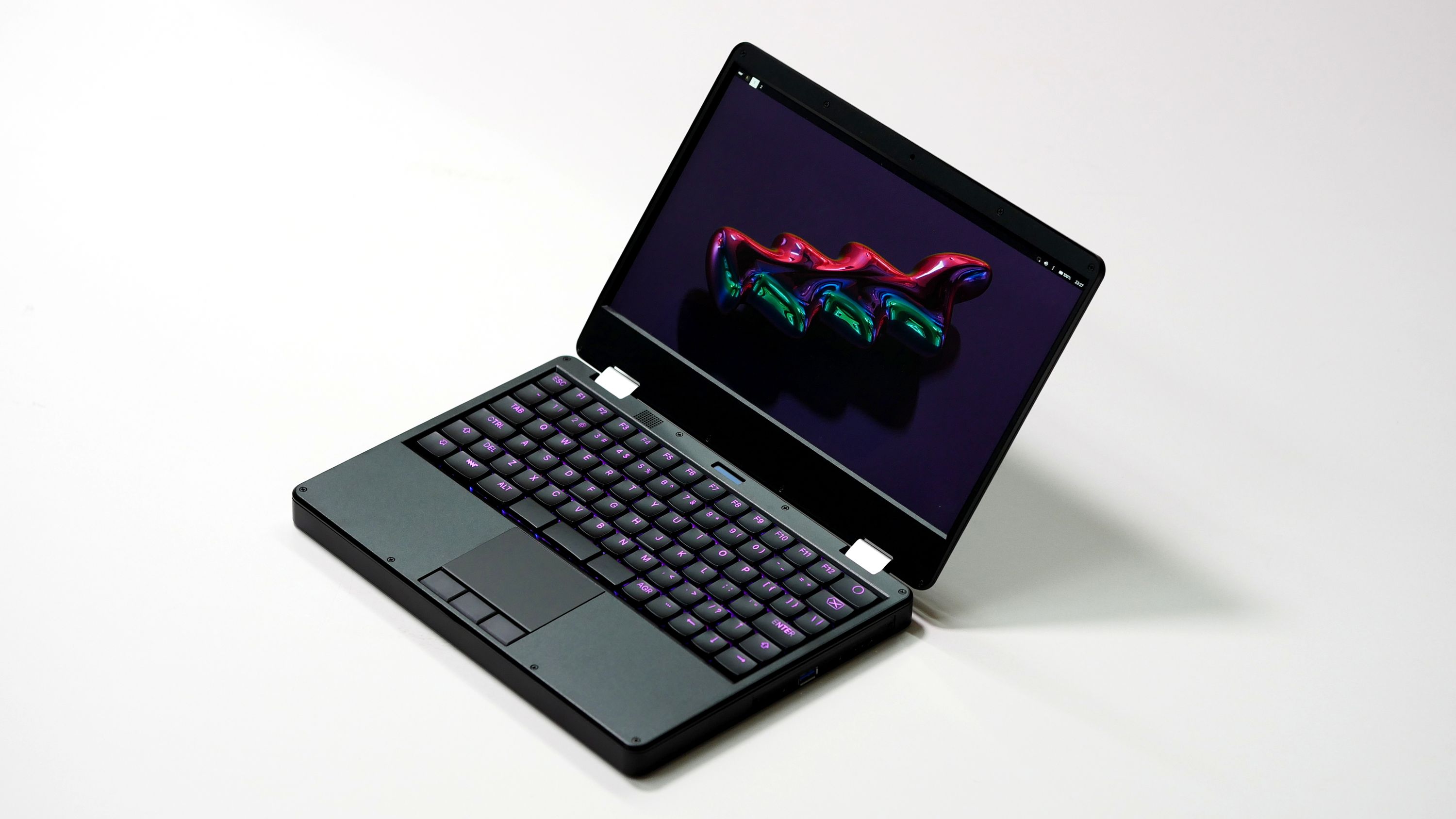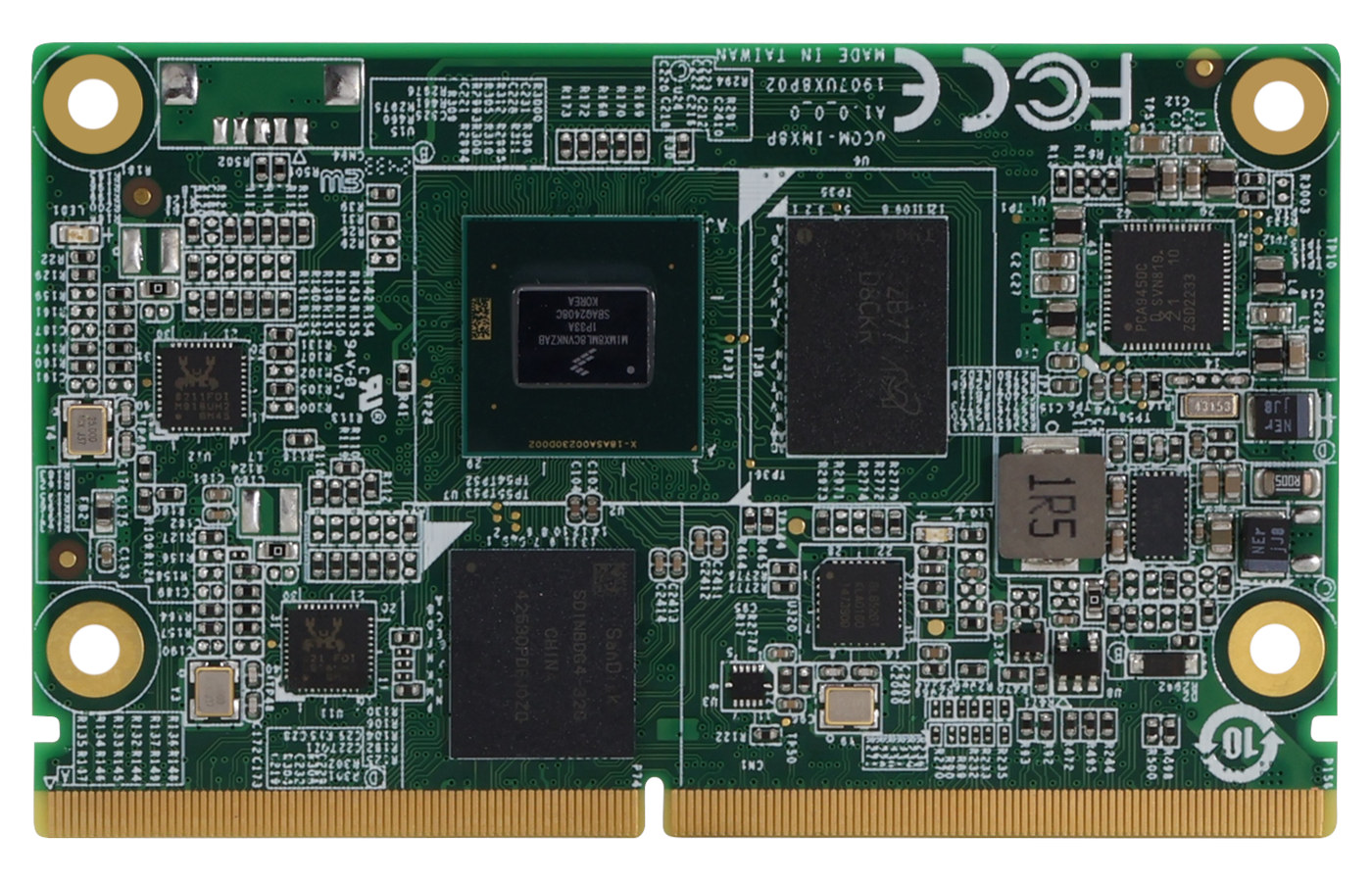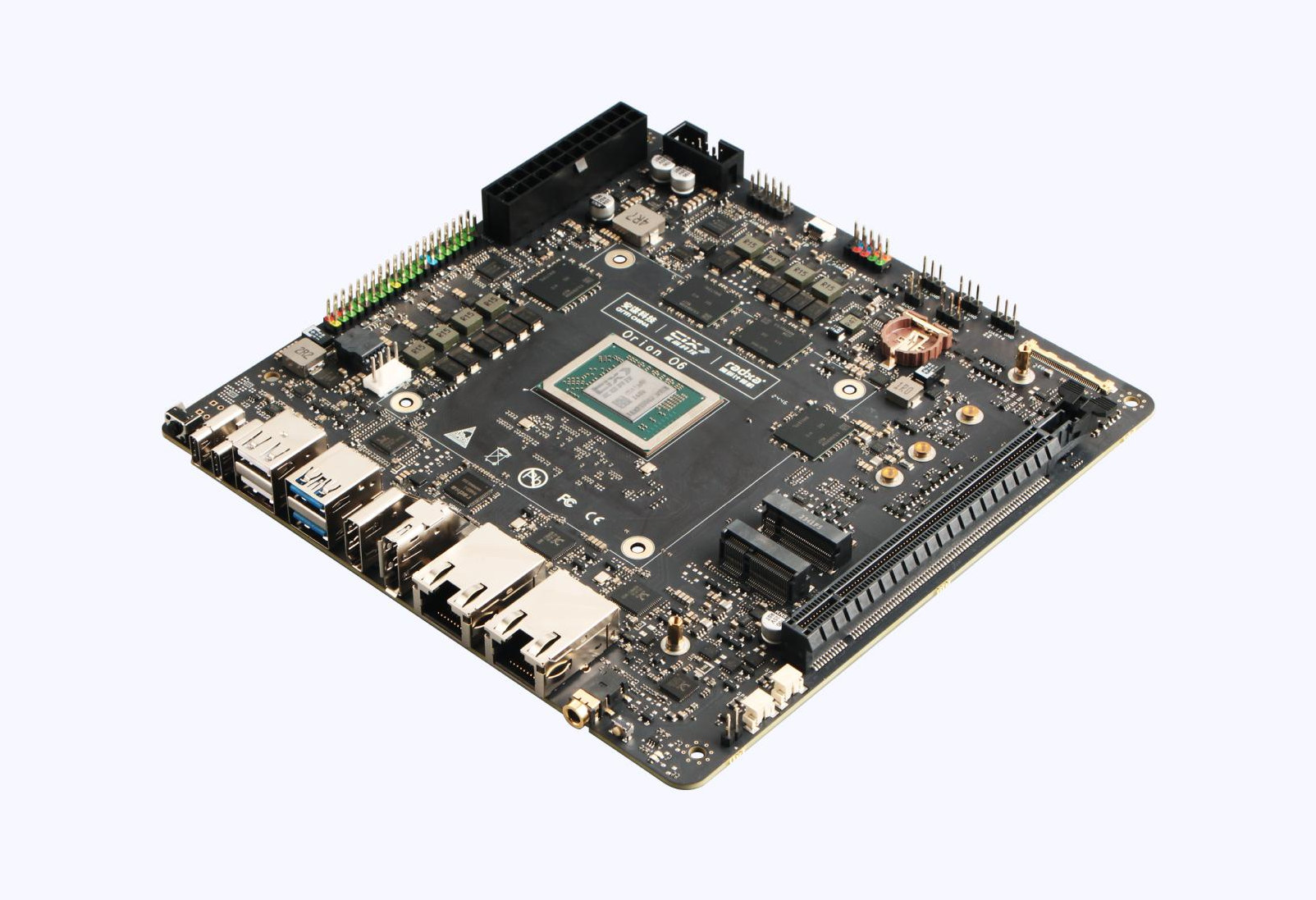Considering the Raspberry Pi CM5 is available with up to 16GB RAM, it should come as no surprise that the Raspberry Pi 5 also got its own 16GB LPDDR4 RAM upgrade. But the extra memory does come at a premium since the new board sells for $120, a $40 markup compared to the Raspberry Pi 5 with 8GB RAM. The extra memory should bring the user experience closer to a desktop machine for browsing the web with multiple tabs, checking emails, watching YouTube videos, and more all at the same time. Besides multitasking, the 16GB RAM may also be beneficial when running generative AI workloads like LLMs and VLMs which are known to be memory-hungry. Raspberry Pi 5 16GB specifications: SoC – Broadcom BCM2712 “D0” stepping CPU – Quad-core Arm Cortex-A76 processor @ 2.4 GHz with crypto extensions, 512KB per-core L2 caches, 2MB shared L3 cache GPU – VideoCore VII […]
Pilet is a Raspberry Pi 5-powered modular, portable computer with 5-inch or 7-inch display, optional built-in keyboard (Crowdfunding)
Pilet is a modular, open-source hardware, portable computer designed for the Raspberry Pi 5 SBC, and equipped with a choice of displays, keyboards, and an optional battery module that can last for up to 7 hours. Two models are available: the Pilet 5 with a 5-inch display, an integrated keyboard, a trackball, a scroll wheel, a navigational switch (D-Pad), and game buttons, and the Pilet 7 with a larger 7-inch display and support for detachable modules such as a keyboard, gamepad, or deck. Pilet specifications: Supported SBC – Raspberry Pi 5 Storage – MicroSD card, NVMe SSD via module Display Pilet 5 – 5-inch IPS MIPI DSI display with 1280×800 resolution, capacitive touch screen. Pilet 7 – 7-inch IPS MIPI DSI display with 1280×800 resolution, capacitive touch screen. Video Output- 2x micro HDMI ports Networking Gigabit Ethernet RJ45 port 802.11ac WiFi 5 and Bluetooth 5.0 Optional LTE cellular via module […]
Qualcomm QCS6490-based Rubik Pi 3 AI SBC supports Android, Linux, and LU operating systems
Thundercomm has officially launched the Rubik Pi 3 SBC built around the Qualcomm QCS6490 SoC with a 12.5 TOPS AI accelerator. The SBC comes in a “PI-CO ITX” form factor that combines the Pico-ITX standard and the 40-pin GPIO header found on Raspberry Pi SBCs. The SBC comes with a standard set of interfaces, including USB, HDMI out, MIPI-CSI camera support, Ethernet, Wi-Fi 5, Bluetooth 5.2, and much more. Additionally, the SBC features a 40-pin header for GPIO, UART for debugging, audio output, and RTC battery support. The company mentions that it is the first Pi-based system using Qualcomm’s AI platforms, hence it supports Raspberry Pi HAT/HAT+ expansion boards, making it suitable for various AI, IoT, and edge computing projects. Rubik Pi 3 SBC specifications: SoC – Qualcomm QCS6490 CPU – Octa-core Kryo 670 with 1x Gold Plus core (Cortex-A78) @ 2.7 GHz, 3x Gold cores (Cortex-A78) @ 2.4 GHz, 4x […]
Radxa Cubie A5E – A compact Allwinner A527/T527 SBC with HDMI 2.0, dual GbE, WiFi 6, Bluetooth 5.4
Radxa Cubie A5E is an SBC powered by Allwinner A527/T527 octa-core Cortex-A55 SoC and featuring HDMI 2.0, dual GbE, WiFi 6 and Bluetooth 5.4, an M.2 socket for NVMe SSD, USB 3.0 Type-A and USB 2.0 OTG (Type-C) ports, and a 40-pin GPIO form factor in a compact 69x56mm form factor. Long-time readers may remember the Allwinner A10-powered Cubieboard launched in 2012 as an alternative to the hard-to-get Raspberry Pi development board or the various TV boxes like the MeLE A1000 we tried to use to run Linux on Arm hardware. At the time, Allwinner SoCs became popular in SBCs but the company management eventually failed to deliver on software, so some members of CubieTech decided to split and founded Radxa to design Rockchip SBCs that looked more promising in terms of software support. It eventually ended up being a good move after a few difficult first years. However, Allwinner […]
EDATEC ED-SBC3300 is an industrial mini-ITX motherboard for the Raspberry Pi CM5
EDATEC ED-SBC3300 is an industrial mini-ITX motherboard designed for the Raspberry Pi CM5 with plenty of ports and headers including HDMI 2.1 and LVDS display interfaces, seven USB 3.0/2.0 interfaces, up to two Gigabit Ethernet ports, a mini PCIe slot for 4G LTE cellular connectivity, RS232 and RS485 interfaces, and more. Like many Raspberry Pi CM5 hardware platforms, the EDATEC ED-SBC3300 mini-ITX motherboard is not exactly new since it’s basically the same as the EDATEC ED-SBC2300 Raspberry Pi CM4-powered industrial Mini-ITX motherboard, but fitted with a Raspberry Pi CM5 instead. Let’s still have a look at the specifications to see if anything has changed. EDATEC ED-SBC3300 specifications: SKUs – EDATEC ED-SBC3300 series – ED-SBC3310, ED-SBC3311, ED-SBC3320, and ED-SBC3321 SoM – Raspberry Pi CM5 SoC – Broadcom BCM2712 CPU – Quad-core 64-bit Arm Cortex-A76 processor @ 2.4GHz GPU – VideoCore VII GPU with support for OpenGL ES 3.1 graphics, Vulkan 1.2 […]
MNT Reform Next is an open-source, RK3588-powered modular 12.5-inch laptop (Crowdfunding)
The MNT Reform Next brings the Rockchip RK3588 processor to the modular laptop series. It retains the open-hardware nature of the older MNT Reform and introduces a lighter and more modular design, complete with a much faster processor. The MNT Reform Next separates the three port boards from the main motherboard, allowing for greater customization and modification than its predecessors. The standard processor module (RCORE) can be swapped with other modules such as the Raspberry Pi CM4, as well as NXP i.MX 8M Plus, NXP LayerScape 1028A, and AMD Kintex-7 FPGA modules. Like the classic MNT Reform and the MNT Pocket Reform, the enclosure for the Reform Next is milled from anodized, bead-blasted aluminum. Apart from being repairable and customizable, the RK3588 modular laptop is powerful enough to be a daily driver for browsing, writing, programming, gaming, graphics design, sound creation, and video editing. MNT Reform Next specifications: SoM SoC […]
AAEON’s first Arm-based SMARC 2.1 module is NXP i.MX 8M Plus-powered uCOM-IMX8P system-on-module
AAEON has released its first Arm-based SMARC 2.1 compliant CPU module, the uCOM-IMX8P built on the NXP i.MX 8M Plus SoC and offered with up to 4GB RAM, up to 128GB eMMC flash. and support for a range of interfaces such as dual Gigabit Ethernet, USB 3.0, PCIe 3.0, and more. The 82mm x 50mm SMARC system-on-module is designed for industrial use with a -40°C to 85°C operating temperature range, Time Sensitive Networking (TSN) support, CAN Bus, MIPI interfaces, and more. That makes it suitable for applications such as predictive maintenance, process optimization, and automated control systems with cameras and displays. AAEON uCOM-IMX8P specifications: SoC – NXP i.MX 8M Plus CPU – Quad-core ARM Cortex-A53 processor @ 1.6 GHz GPU – Vivante GC380 2D GPU and GC7000UL 3D GPU VPU – 1080p60 video decoder & encoder AI accelerator – Optional 2.3 TOPS Neural Processing Unit (NPU) System Memory – Up […]
Radxa Orion O6 mini-ITX motherboard is powered by Cix P1 12-core Armv9 SoC with a 30 TOPS AI accelerator
Radxa Orion O6 is an Arm mini-ITX motherboard with performance similar to Apple M1 and Qualcomm 8cs Gen3 platform thanks to the Cix P1 12-core Armv9 processor with four Cortex-A720 cores clocked at 2.8 GHz, four Cortex-A720 cores at 2.4GHz, and four low-power Cortex-A520 cores clocked at 1.8 GHz. The Cix P1 SoC also features an Arm Immortalis-G720 GPU for graphics and AI computing, a 30 TOPS AI accelerator for a combined 45 TOPS of AI inference performance, an 8Kp60 video decoder, and an 8Kp30 video encoder. The Orion O6 SBC ships with up to 64GB LPDDR5, features a 4Kp60 HDMI 2.0 port, a 4Kp120 DP 1.4 connector, two 5Gbps Ethernet ports, M.2 socket for storage and wireless, a PCIe x16 slot, and more. Radxa Orion O6 specifications: SoC – Cix P1 (Codename: CD8180, not the CP8180 variant for AI PCs) 12-core DynamIQ processor 4x Cortex‑A720 big cores @ up […]


